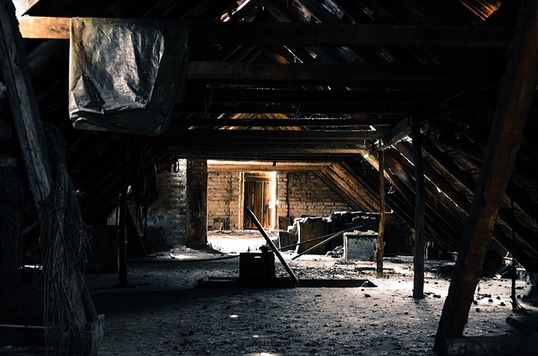
One of the most important aspects of being a homeowner is safeguarding your home from potential water damage. One area that is frequently disregarded but needs our attention is the attic. Although it may seem like a remote space, the attic can be vulnerable to water infiltration, which can endanger the safety of your belongings and the structural integrity of your home. In this comprehensive guide, we will take you on a journey to discover the key strategies for preventing water damage in the attic. From comprehending the common culprits behind attic water damage to putting simple and practical solutions into practice, this guide aims to arm homeowners with the knowledge they need to protect this frequently overlooked area of the house.
Even though it is out of sight, the attic is crucial to the general health of our houses. Water damage in this area can cause a host of problems, such as weakened structural integrity and the growth of mold and mildew. As we delve into the complexities of preventing attic water damage, we will solve the puzzles of figuring out possible causes, doing preventative maintenance, and strengthening your attic against the silent threat of moisture. Come along on this journey to not only protect your house from the dangers of water damage but also to develop a greater appreciation for the significance of keeping an attic that is dry and resilient.
See also our post on Professional Water Damage Restoration Services, West Lake Hill, TX
How to Identify Common Causes
Leaky Roof
Inspect your roof regularly for signs of wear and tear. Leaks in the roof are a primary cause of attic water damage, and timely roof repairs can prevent water from seeping into the attic space.
Poor Ventilation
Ensure proper attic ventilation to prevent moisture buildup. Inadequate airflow can lead to condensation, fostering an environment conducive to water damage. Install vents and exhaust fans as needed.
Damaged Flashing
Examine the flashing around chimneys, vents, and skylights. Damaged or improperly installed flashing can allow water to infiltrate, leading to potential leaks and attic water damage.
Clogged Gutters
Regularly clean and maintain your gutters to prevent water overflow. Clogged gutters can result in water pooling on the roof, increasing the likelihood of leaks and water seepage into the attic.
Plumbing Issues
Check for plumbing leaks in the attic or nearby areas. A leaking pipe can introduce water into the attic space, causing damage over time. Address any plumbing issues promptly to prevent water-related complications.
Roof Maintenance Tips
Regular Inspections
Perform routine inspections of your roof, especially after severe weather events. Look for missing shingles, damaged flashing, or any visible signs of wear. Timely identification of issues can prevent extensive water damage.
Repairs and Replacements
Address any roof damage promptly. Replace missing or damaged shingles, repair cracked flashing, and attend to any vulnerable areas that could compromise the roof’s ability to keep water out.
Clear Debris
Remove debris, such as leaves and branches, from the roof surface. Accumulated debris can trap moisture, leading to deterioration and potential leaks. Regular cleaning helps maintain a dry and resilient roof.
Install a Drip Edge
Consider installing a drip edge along the edges of your roof. A drip edge helps direct water away from the attic, preventing it from seeping into vulnerable areas and causing damage.
Professional Roof Inspection
Schedule a professional roof inspection at least once a year. Experienced roofers can identify potential issues that may go unnoticed during routine inspections, ensuring your roof is in optimal condition.
See also our post on A Comprehensive Water Damage Restoration Services Checklist
How to Enhance Attic Ventilation
Ridge Vents
Install ridge vents to promote effective airflow in the attic. Ridge vents allow warm, moist air to escape, reducing the risk of condensation and preventing the accumulation of moisture in the attic space.
Soffit Vents
Combine ridge vents with soffit vents for balanced ventilation. Soffit vents draw in fresh air from outside, creating a continuous flow of air that helps regulate temperature and humidity in the attic.
Attic Fans
Consider installing attic fans to enhance ventilation further. Attic fans help expel hot air, preventing the attic from becoming a breeding ground for moisture and reducing the likelihood of water damage.
Insulate Properly
Ensure proper insulation to prevent temperature differentials that can lead to condensation. Proper insulation regulates the attic’s temperature, minimizing the risk of moisture buildup and subsequent damage.
Monitor Humidity Levels
Use a hygrometer to monitor humidity levels in the attic. Keep humidity below 50% to discourage the growth of mold and mildew, which thrive in damp environments.
Flashing and Sealant Maintenance Tips
Check Flashing Regularly
Inspect flashing around chimneys, vents, and other protrusions on the roof. Ensure that flashing is intact, sealed, and free from damage. Address any issues promptly to prevent water infiltration.
Apply Sealant as Needed
Use roof sealant to reinforce vulnerable areas. Apply sealant around flashing, vents, and other potential entry points for water. Regularly check and reapply sealant to maintain its effectiveness.
Address Cracks and Gaps
Examine the attic for any visible cracks or gaps in the walls or roof. Seal these openings promptly with appropriate materials to prevent water intrusion.
Inspect Skylights
If your attic has skylights, inspect them for signs of leaks. Ensure that the seals around skylights are intact and apply additional sealant if necessary to maintain a watertight seal.
Professional Inspection
Engage the services of a professional roofer for a comprehensive inspection of flashing and sealant. Professionals can identify hidden issues and provide expert solutions to prevent water damage.
Gutter Maintenance Tips
Regular Cleaning
Clean gutters regularly to remove debris and prevent clogs. Clogged gutters can lead to water overflow, causing water to pool on the roof and increasing the risk of leaks.
Install Gutter Guards
Consider installing gutter guards to minimize debris accumulation. Gutter guards act as a barrier, preventing leaves and debris from entering the gutter system while allowing water to flow freely.
Adjust Slope and Alignment
Ensure gutters are properly aligned and sloped. Gutters should direct water away from the roof and foundation. Adjust the slope and realign gutters as needed to maintain effective water drainage.
Repair Leaks and Holes
Inspect gutters for leaks or holes. Repair any damaged areas promptly to prevent water from dripping onto the roof and potentially seeping into the attic.
Downspout Extensions
Use downspout extensions to direct water away from the foundation and the area around the attic. Proper water drainage prevents excess moisture from infiltrating the attic space.
Plumbing Vigilance Tips
Regular Checks
Periodically inspect plumbing in and around the attic for leaks. Check for dampness, discoloration, or any visible signs of water damage. Promptly address any plumbing issues to prevent further damage.
Insulate Pipes
Insulate exposed pipes in the attic to prevent condensation. Insulation helps maintain consistent temperatures, reducing the risk of water damage caused by moisture buildup on pipes.
Fix Leaks Immediately
If you discover any plumbing leaks, fix them immediately. Delaying repairs can lead to prolonged water exposure, increasing the likelihood of extensive damage to the attic and surrounding areas.
Install Leak Detectors
Consider installing leak detectors in the attic. These devices can provide early warnings of potential plumbing issues, allowing you to address them before they escalate and cause water damage.
Professional Plumbing Inspection
Engage a licensed plumber for a professional inspection of your attic plumbing. Professionals can identify hidden leaks and ensure that the plumbing system is in good condition.
Insulation and Sealing Tips
Adequate Insulation
Maintain proper insulation in the attic to regulate temperatures. Adequate insulation prevents heat transfer, minimizing the risk of condensation and protecting against water damage.
Seal Cracks and Openings
Inspect the attic for cracks, gaps, and openings. Seal these areas with appropriate materials to prevent outside elements, including water, from infiltrating the attic space.
Weather Stripping
Apply weather stripping around attic windows and doors. Weather stripping helps create a tight seal, preventing drafts and moisture from entering the attic.
Monitor for Pests
Pests can cause damage and create openings for water infiltration. Regularly inspect the attic for signs of pests, such as rodents or insects, and take measures to address infestations promptly.
Regular Inspection
Perform regular visual inspections of the attic’s interior. Look for any changes, discoloration, or unusual odors, that may indicate water damage. Early detection allows for timely intervention.
See also our post on A Comprehensive Guide to Preventing Water Damage in Your Lakeside Property
Conclusion
Protecting your attic from water damage requires a mix of preventative actions, routine upkeep, and prompt interventions. Homeowners can strengthen their homes against the damaging effects of moisture by learning the typical causes of attic water damage and putting workable solutions into place.
Every action you take, such as maintaining your roof and improving attic ventilation, to careful gutter maintenance and checking your plumbing, adds to the overall security of this sometimes overlooked area. Putting time and effort into preventive measures guarantees the longevity of your attic and its contents, as well as the structural integrity of your home. A dry and secure attic is a sign of a well-kept home and also acts as a buffer against future headaches and costs.






